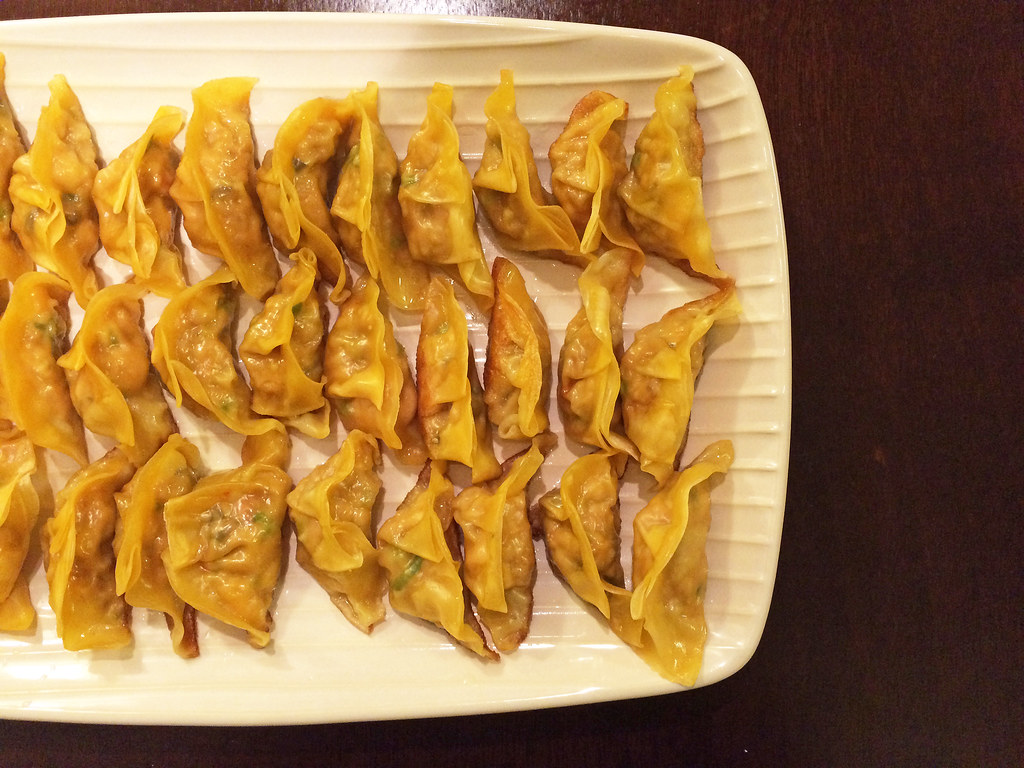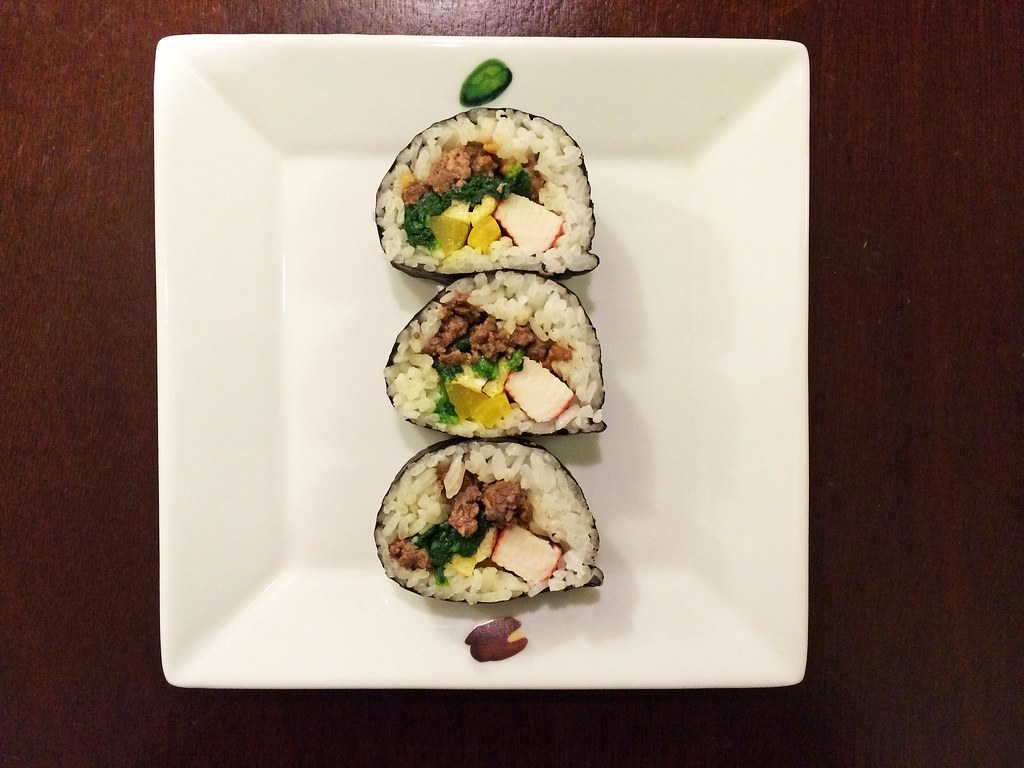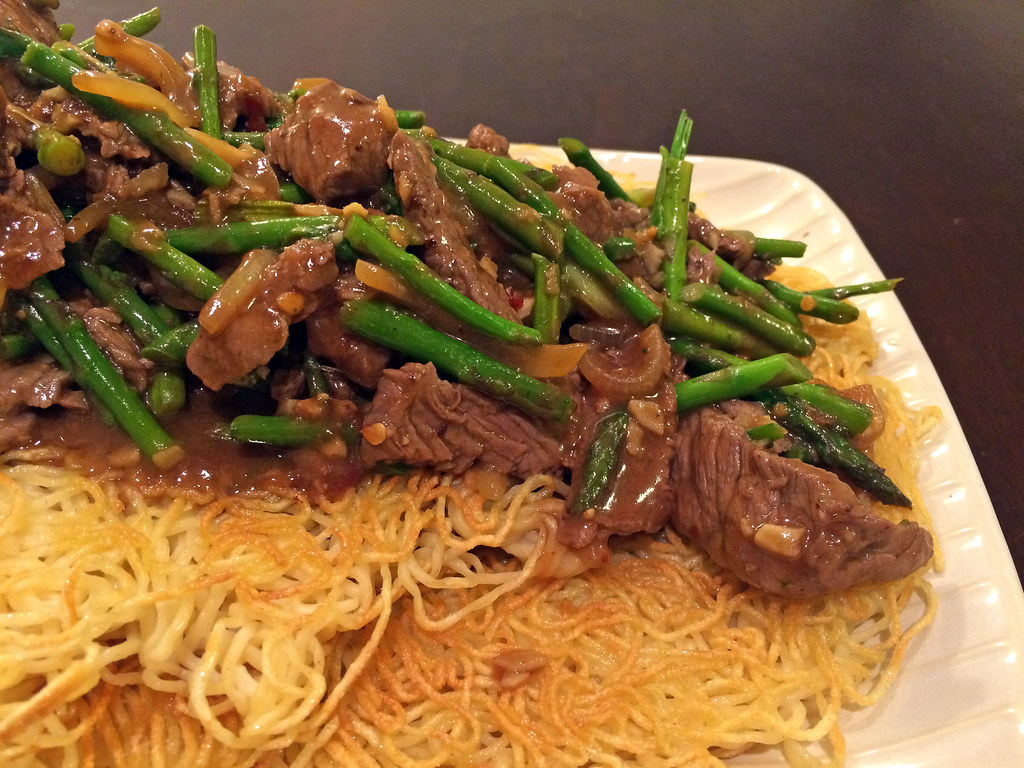Nuts? In a dumpling? With meat? It may sound unconventional, but this combination works wonderfully. I’m always on the hunt for new types of dumplings and this one adds a wonderful crunch and depth of flavor to the chicken filling. Cooked in the style of gyoza, their dumpling skins become crispy and wonderfully chewy as they cook.
These are a little time consuming to make, but you can make a batch ahead of time and freeze them for later, for when you’re ready to cook them. These hearty dumplings go perfectly with a simple dipping sauce of vinegar, ginger, and soy sauce.
Ingredients:
3/4 pound ground chicken
3 dried shiitake mushrooms
1/2 cup chopped water chestnuts
1/2 cup sliced green onions
1/2 cup chopped salted cashews
1 1/2 tablespoons minced ginger
1 1/2 tablespoons soy sauce
1 1/2 tablespoons hoisin sauce
2 teaspoons Chinese rice wine
1 teaspoon chili garlic sauce
1 teaspoon sesame oil
1 egg, lighly whisked
1 teaspoon cornstarch
1 package round dumpling wrappers
3 tablespoons vegetable oil
1. In a bowl, cover the mushrooms with hot water and let stand for 15 minutes. Drain and finely chop.
2. In another bowl, combine the chicken with the mushrooms, water chestnuts, green onions, cashews, ginger, soy sauce, hoisin sauce, rice wine, chili garlic sauce, sesame oil, egg, and cornstarch. Mix well.
3. Lay a dumpling wrapper flat. Using your finger, brush the outer edge with water. Spoon 1 teaspoon of filling in the center. Fold the wrapper over the filling to form a half-moon and fold pleats, pressing with your fingers to adhere until you have a sealed and pleated half-moon. Repeat with the rest of the wrappers and filling.
4. Pour vegetable oil into a large nonstick skillet to cover the bottom. Arrange the dumplings in the skillet with the non-pleated side down. Cook over medium heat until golden on the bottom, about 3 minutes.
5. Pour in enough water to cover the bottom of the dumplings, about 1/3 cup. Cover and cook until most of the water is absorbed and the filling is cooked through, about 10 minutes. Uncover and cook until all of the water has evaporated and the dumplings are crispy on the bottom, about 2 minutes longer. Transfer to a serving plate and serve warm.





